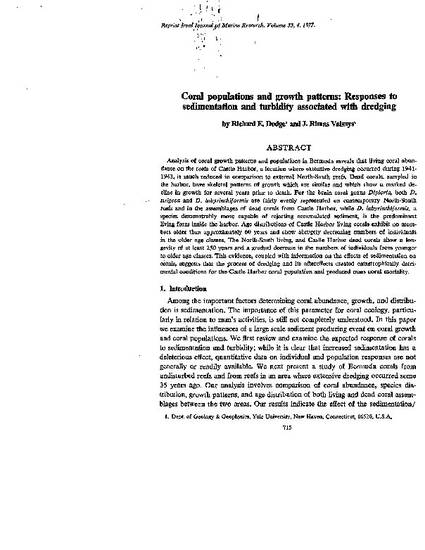
- Coral reefs,
- Environmental monitoring
Analysis of coral growth patterns and populations in Bermuda reveals that living coral abundance on the reefs of Castle Harbor, a location where extensive dredging occurred during 1941- 1943, is much reduced in comparison to external North-South reefs. Dead corals, sampled in the harbor, have skeletal patterns of growth which are similar and which show a marked decline in growth for several years prior to death. For the brain coral genus Diploria, both D. strigosa and D. labyrinthiformis are fairly evenly represented on contemporary North-South reefs and in the assemblages of dead corals from Castle Harbor, while D. labyrinthiformis, a species demonstrably more capable of rejecting accumulated sediment, is the predominant living form inside the harbor. Age distributions of Castle Harbor living corals exhibit no members older than approximately 60 years and show abruptly decreasing numbers of individuals in the older age classes. The North-South living and Castle Harbor dead corals show a longevity of at least 250 years and a gradual decrease in the numbers of individuals from younger to older age classes. This evidence, coupled with information on the effects of sedimentation on corals, suggests that the process of dredging and its after effects created catastrophically detrimental conditions for the Castle Harbor coral population and produced mass coral mortality.
